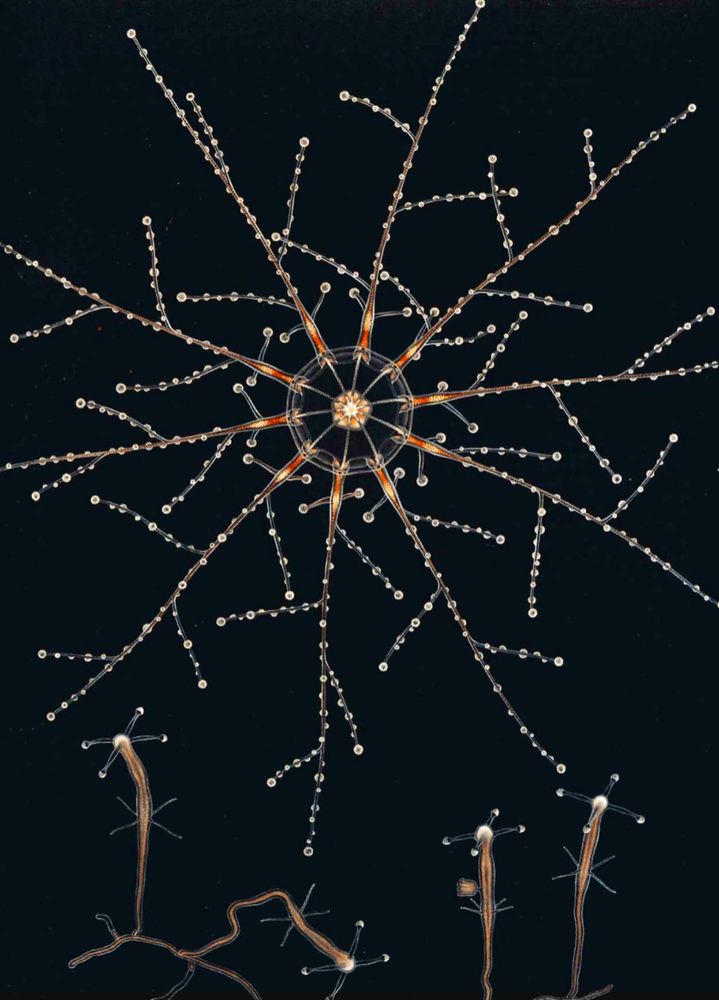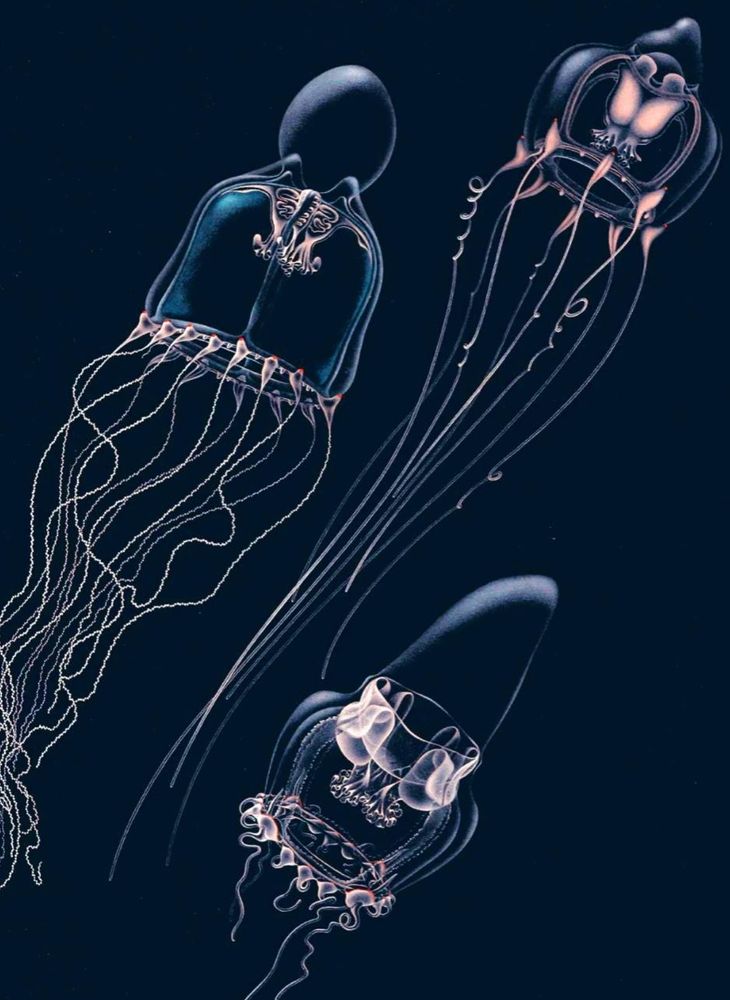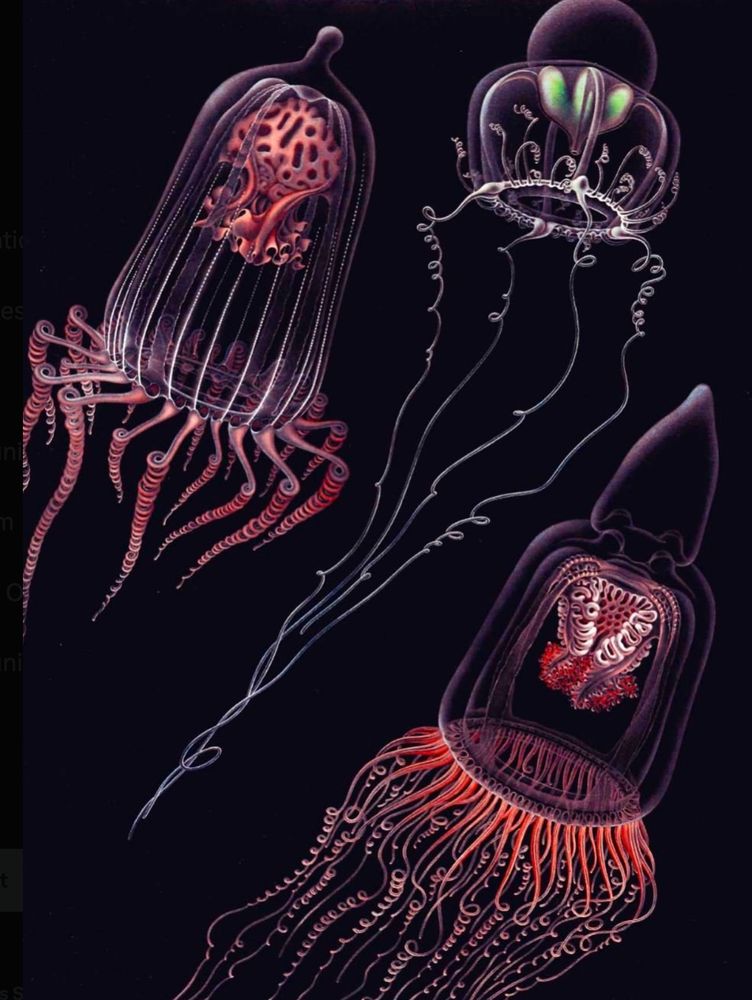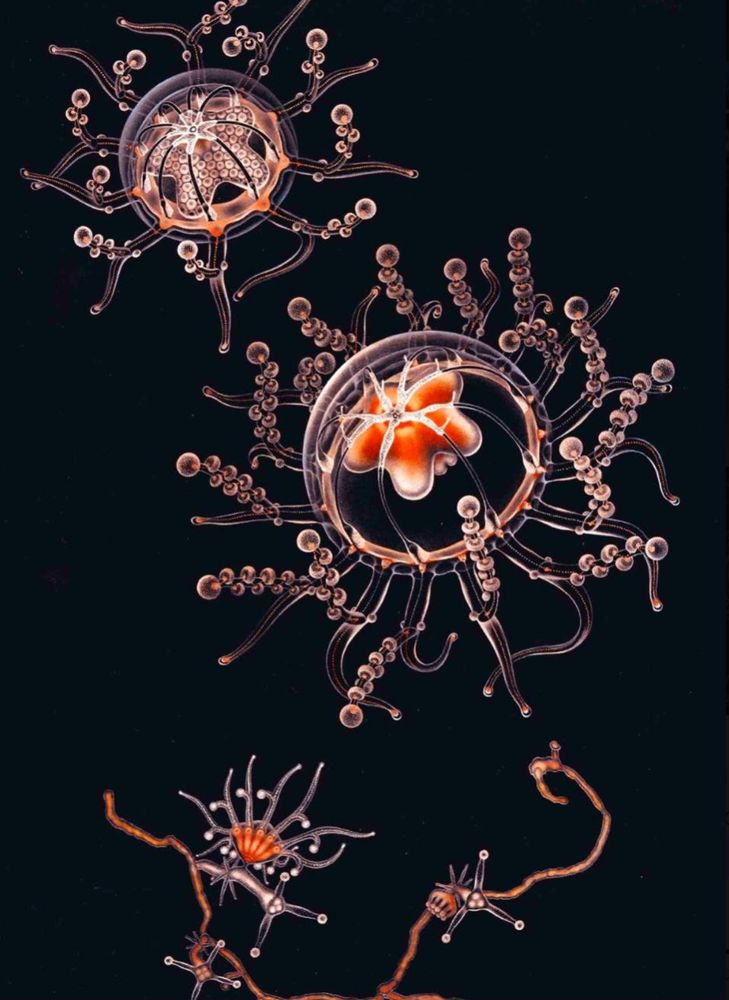
A picture of a frog on a leaf with the SICB and Skype a Scientist logos on the bottom right with the following words on top: "Call for Artists!" Learn about the latest animal research adn create art inspired by the science at the SICB meeting in Portland, OR. Deadline to apply: dec 12, Project dates Jan 3-7, Stipend $1000"
ARTISTS!
I need your help!
In collab. w/the Society for Integrative & Comparative Biology, I'm organizing a group of artists to come to our Jan. meeting! We're looking for artists to create based on what they learn at the conference. $1000 stipend.
Application is V short! forms.gle/ah1i8KwNJinZ...
22.11.2025 15:51 — 👍 507 🔁 418 💬 33 📌 26

#SICB @sicb-diz.bsky.social #auction!
This auction will support #students and #postdocs through funds to directly support their #research & also to attend the SICB #conferences.
We are asking for donations of any kind (gift cards, art, cool clothing/shirts/etc.
docs.google.com/forms/d/e/1F...
29.10.2025 11:27 — 👍 3 🔁 2 💬 0 📌 1

@sicb-diz.bsky.social is putting on their annual auction at #SICB 2026!
This #auction will support #students and #postdocs through funds to directly support their #research and also to attend the SICB #conferences.
Donate gift cards, art, excursions and more!
docs.google.com/forms/d/e/1F...
05.11.2025 12:49 — 👍 7 🔁 2 💬 0 📌 0
ha ha. OKAY ACTINARIANOLOGISTS what is the ANGRIEST SEA ANEMONE!
18.11.2025 18:58 — 👍 9 🔁 2 💬 1 📌 0
Hey #TeamInvert #SICB2026 folks! Have some items that you may want to donate for the @sicb-diz.bsky.social auction? Please reach out to @andyantarctica.bsky.social or fill out the form below!
🪼🪸🪱🦋🐛🐝🐌🪰🦟🕷️🐜🦂🐞🪲🐙🦑🦞🦀🦐
15.10.2025 18:50 — 👍 2 🔁 3 💬 0 📌 0


I am looking to hire a postdoc interested in combining genetics and evolution to understand why telomeres vary so much in plants. My group has been developing Mimulus a genetic model for studying plant telomeres and we have really cool research brewing. Please check ad for detail. Deadline is 12/31.
16.11.2025 20:29 — 👍 38 🔁 37 💬 0 📌 0

Confocal image of the tentacles in a stinging cell transgenic of Hydractinia (hermit crab fur hydroid). Bright yellow indicates either a developing or matured stinging cell. Images acquired at the Stowers Institute.
Yesterday was my third “Dr. Day” anniversary, and I got to celebrate by submitting one of the last projects I worked on with @pcart.bsky.social @ku-eeb.bsky.social and finished up @stowersinstitute.bsky.social. I’m excited when I get to share! A hint, it is #Hype4Hydrozoa!
🧪🪼🧪
15.11.2025 15:35 — 👍 10 🔁 1 💬 0 📌 0
Major #Hype4Hydrozoa! 🪼
11.11.2025 01:06 — 👍 3 🔁 1 💬 0 📌 0

Historic illustrations of jellyfish

Historic illustrations of jellyfish
Alfred Mayor's "Medusae of the world" (1910) attempted to describe all known forms from all parts of the world. The #SciArt is based on drawings, from life, by William K. Brooks and Louis Murbach. View it in #BHLib: www.biodiversitylibrary.org/bibliography... #WorldJellyfishDay #ILoveBHL
03.11.2025 07:40 — 👍 40 🔁 14 💬 0 📌 0
Spooky season royalty 👑🎃✨️
Atolla gigantea is the largest Atolla species found off the West Coast. This deep-sea crown jelly can reach a diameter of up to 15 centimeters (six inches) and is one of the most widely distributed jellyfish. The genus occurs worldwide, from the Arctic to the Antarctic.
22.10.2025 16:55 — 👍 147 🔁 40 💬 1 📌 5

🪸 🪸 🪸 Postdoc position in my group at Bristol to study the role of venom in surviving environmental stress in corals! 🪸 Interested in venom biochemistry and coral ecology?Please apply by November 24!
@bristolbiosci.bsky.social
www.bristol.ac.uk/jobs/find/de...
27.10.2025 12:42 — 👍 32 🔁 37 💬 0 📌 1
Sign Up
Skype a Scientist gives you the opportunity to connect with students and the public around the world.
Heyyyy we desperately need more archaeologists to volunteer to answer questions from students via video chat through @skypeascientist.bsky.social.
We have 80 unmatched teams. We’ve already matched 650 😵💫
If you know any archaeologists, please send them here www.skypeascientist.com/sign-up.html
24.10.2025 01:11 — 👍 217 🔁 224 💬 14 📌 16

Strobilating C. chesapeakei polyp
I made my C. chesapeakei for #Invertober quickly at the bar tonight! For Scyphozoa, you have to remember the polyps and strobila :)
02.10.2025 03:20 — 👍 16 🔁 2 💬 0 📌 1
Hey! QUICK! Scientists/Science communicators of all kinds.
Have you taken anything you've learned from my incessant yapping about my Philly science engagement work & made your own version? Made your own zine, made your own posters, stickers, events, anything?
I would love to hear about it if so!
01.10.2025 20:36 — 👍 75 🔁 25 💬 6 📌 0

a blue jellyfish from spongebob squarepants is standing on a grassy hill
Alt: GIF: Blue jellyfish from spongebob squarepants is standing on a grassy hill, with tentacle arms in a “bring it on” motion.
End of Sept = @sicb.bsky.social Fall Newsletters!
Need a specimen for your phylogeny? Have a field course to advertise? We’d love to feature your research, teaching, outreach and photos. Let us know!
Send a short blurb + image to secretary.diz@sicb.org!
#TeamInvert
29.09.2025 16:15 — 👍 2 🔁 2 💬 0 📌 0

This beautiful #MicroscopyMonday shows a sea anemone’s tentacle, which contains numerous stinging cells (green) used to ensnare and capture prey. 🔬 (Gibson Lab) #SciSky
22.09.2025 15:55 — 👍 31 🔁 3 💬 0 📌 1
Hello #fish 🐟 🐠 researchers and PIs of tomorrow! We would be excited to sponsor you for an Ecology, Evolution and Behavior (EEB) Presidential #Postdoc Fellowship application @michiganstateu.bsky.social. Application deadline is Nov 10, so get in touch soom!
#EndlessFishMostBeautiful
27.09.2025 18:51 — 👍 27 🔁 21 💬 0 📌 0
I get that the news cycle is packed right now, but I just heard from a colleague at the Smithsonian that this is fully a GIANT SQUID BEING EATEN BY A SPERM WHALE and it’s possibly the first ever confirmed video according to a friend at NOAA
10 YEAR OLD ME IS LOSING HER MIND (a thread 🧵)
24.09.2025 20:30 — 👍 29676 🔁 9976 💬 731 📌 1547
Applications are now welcome for the 2026 Venom Evolution, Function and Biomedical Applications GRC & GRS. Before we highlight the amazing programme of speakers we are beginning to put together, we’d like to introduce our organising committee.
16.09.2025 13:44 — 👍 2 🔁 2 💬 1 📌 0
Our science photo book The Radiant Sea is out Sept 2nd!!
30 years of research, 10 years of "we should", and a year of collating pix and writing.
Sönke and I show (mostly for the first time) images of how organisms produce, use, and interact with light in the sea. #bioluminescence #fluorescence 🦑🧪🌊
28.08.2025 02:22 — 👍 209 🔁 69 💬 14 📌 8

NSF Graduate Research Fellowship Program (GRFP)
The GRFP lives!! (due end of October)
www.nsf.gov/funding/oppo...
08.09.2025 18:23 — 👍 344 🔁 277 💬 6 📌 18
The #StowersGrad Class of 2025 is here! ✨ Hear from our newest graduate students about why they chose our #PhD program and what excites them most about the journey ahead. #gradschool
🔗 bit.ly/45HJ0FC
22.08.2025 12:58 — 👍 1 🔁 1 💬 0 📌 0

firecracker like jellyfish from Anita Brinckmann-Voss's 1970 book on jellyfish of the Mediterranean Sea.

Wavy tentacles from Anita Brinckmann-Voss's 1970 book on jellyfish of the Mediterranean Sea.

red jellyfish from Anita Brinckmann-Voss's 1970 book on jellyfish of the Mediterranean Sea.

Orange jellyfish from Anita Brinckmann-Voss's 1970 book on jellyfish of the Mediterranean Sea.
The lost jellyfish art of Ilona Richter, from Anita Brinckmann-Voss's 1970 book on jellyfish of the Mediterranean Sea...
🪼🧪🌿🌊
12.08.2025 13:25 — 👍 266 🔁 109 💬 4 📌 2
Very cool! I honestly have no idea - I (unfortunately) have very little experience with field specimens. If you want any images from the lab strains we have let me know.
06.08.2025 01:13 — 👍 0 🔁 0 💬 0 📌 0
This is Hydractinia symbiolongicarpus, a lab strain we have had for a while. Polyp color certainly go between white to “bright” pink depending on last feed, but egg color is pretty consistent. I have to look back at some pics of other species to see how much egg color might vary.
05.08.2025 21:11 — 👍 0 🔁 0 💬 1 📌 0
It's me, the sea lady.
I study Sexual Selection, Host Sex/Parasite Interactions, and Behavior (also interested in Bio Ed!)
Currently looking for a postdoc position!
Biologist/Photographer/Artist/Jedi/Autistic
https://bfitzwater.wixsite.com/bfitzwater
Visual ecologist studying light and vision on the high seas. Opinions my own.
🐟🪼🐦
tomiwanicki.com
Not-for-profit publisher of Development, Journal of Cell Science, Journal of Experimental Biology, Disease Models & Mechanisms and Biology Open. Host of community sites the Node, preLights and FocalPlane. Supporting biologists and inspiring biology.
An independent community for students, academics, and professionals passionate about corals. Not affiliated with any institution or organization.
Systematic, evolutionary history, and taxonomy of stony corals.
🌊
Postdoctoral researcher at the Smithsonian Natural Museum of Natural History.
We are a trailblazing group of 4 women; three artists and a scientist who are bringing the deep-ocean to the world through fine art and science.
www.unseenoceancollective.com
Upcoming shows in Sweden, Alaska, and Washington. SAGA grant winners.
Based at Biomedical and Life Sciences, Lancaster University, UK
We love antibodies, toxins and de novo protein design 🧬🧪🧫💊🖥🐍
Ecologist and Herpetologist. Urban Birds Program Coordinator (BirdLife AUS), Ass. Researcher, People For Wildlife. Co-owner, AUS Reptile Academy. Fulbright alumna. Inspiring Australia Ambassador (Qld). #PalmCockatooProject. Ex UofCaliforniaIrvine / ANU
The 4th Gordon Research Conference & Seminar on Venom Evolution, Function and Biomedical Applications - 16-17 (GRS) 17-22 (GRC) May, 2026! #Barcelona #GRCVenom26 #GRSVenom26
Lecturer in Evolutionary Biology @BristolUni
Evolution of early branching animals
Founded by four Black female shark researchers seeking to promote diversity and inclusion in shark research. 🦈
Ph.D. Candidate Bhattacharya Lab @RutgersEENR; M.S. #PutnamLab @uricels; @ICRSreefstudent
#omics, #ecophysiology, and #Coral #Reef #Resilience
I study diversification, species delimitation, trait evolution & similar questions, often using new methods. Also random coding projects. College prof living in Oak Ridge, TN, USA. Opinions my own. He/Him
Coral Reefs 🪸 and The Open Ocean 🌊
Doctoral Fellow UTokyo (東京大学)
colinanthony.wixsite.com/cjanthony
Nonprofit advancing discovery through rapid, free sharing of scientific communications. New home of bioRxiv and medRxiv.
Principal Investigator at Stowers Institute for Medical Research
Ribosome enthusiast!
https://labs.stowers.org/kostova
Division of Invertebrate Zoology for the Society of Integrative and Comparative Biology.
Acct managed by: @gelatinoussting.bsky.social
Banner 📷: Jellyfish polyps
CC @gelatinoussting.bsky.social
Biologist and molecular ecologist, studying animals in Antarctica, e.g., sea spiders. I also use eDNA to study biodiversity all over the globe.
Web: MahonLab.com
Google Scholar: https://rb.gy/6z3tre
LinkedIn: https://tinyurl.com/4kvx48s























